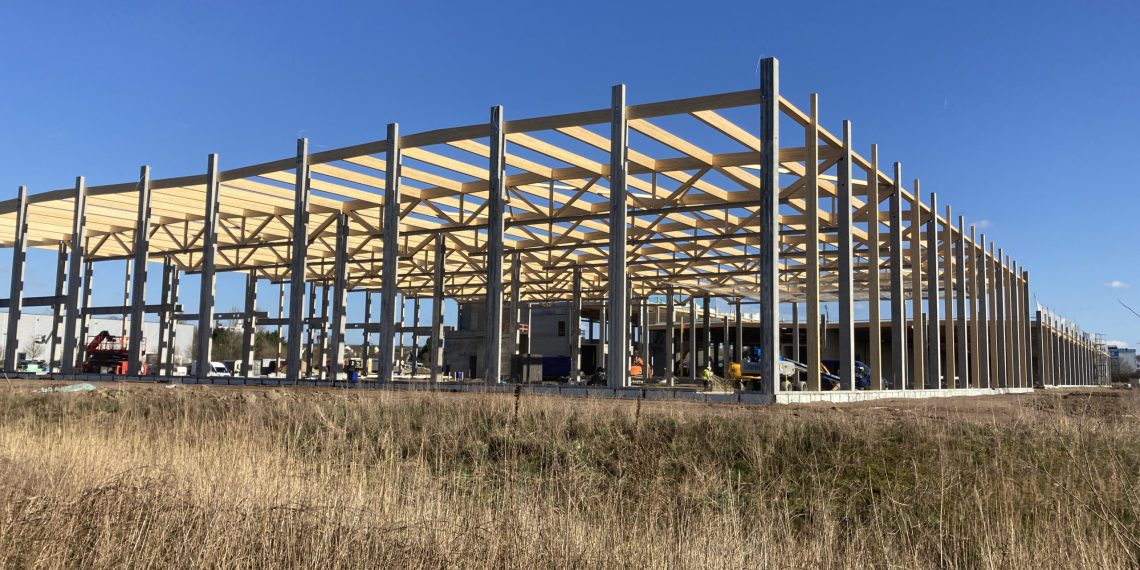The new building project with which SMC Germany is expanding at its headquarters in Egelsbach near Frankfurt am Main is very much on schedule. “The shell of our new production and distribution buildings is growing every day,” says Ralf Laber, Managing Director. Construction of the 17,000-square-meter facilities can already celebrate half-time.
Sustainable neighborhood for long-term growth
The company is focusing on a long-term perspective: the new buildings are not only intended to improve internal logistics by linking production, warehousing and distribution. Ralf Laber: “Uniting these three areas already saves a lot of effort and resources, makes us more productive and enables faster delivery times. But we want to use it to achieve even more.” Around 80 percent of the roof area will be greened, thus passively improving the building’s climate. In addition, solar cells with an output of around 500 kilowatts will generate electricity on the production building in the future, making SMC less dependent on fossil fuels.
“However, we didn’t just consider our own sustainability during the design process, but also looked for ways to move the site forward. That’s why we planned a rainwater retention system that captures excess water.” The stored water benefits a farm in the neighborhood, which can access it in the event of a dry summer. The reservoir contains more than two million liters. Pascal Borusiak: “This underlines our long-term commitment to the region.”
- Pascal Borusiak, Director Business Operations
“Green” planning from shell construction to operation
Anyone who currently sees the construction site may start to wonder whether industrial buildings are really being built there. The supporting structure in the shell looks more like a half-timbered house. Appearances are not deceptive, however, because the building is not only being constructed in steel and reinforced concrete, but also with 1,230 cubic meters of wood, which corresponds to a weight of 615 tons. Yet the material has long been used internationally and is experiencing a renaissance in Europe as well.
“The advantages of timber construction for the industrial sector are many,” says Pascal Borusiak. “Wood has a long service life and does not corrode. It is also much lighter than steel, allowing for faster and more cost-effective construction without bored piles while maintaining the same stability and load-bearing capacity.” In addition, wood is a renewable resource and, with a high span of 31 meters, the wooden structure offers a light room as well as more space, since few supports are needed. However, one argument in particular stands out: wood is more suitable than steel in the event of a fire.
Pascal Borusiak explains why: “Wood is very resistant to fire and does not deform even in high heat like steel, for example. This contributes significantly to structural integrity and safety in the event of a fire.” Ralf Laber is pleased with the successful progress of construction: “As a leading manufacturer, partner and solution provider for electrical and pneumatic automation technology, we sell our products worldwide. With our new building project here in Egelsbach, we are showing that despite all our international success, we remain connected to our home country.”

















